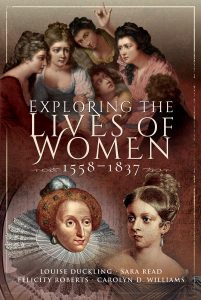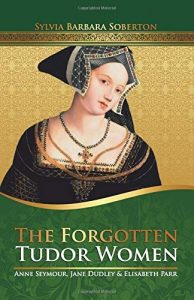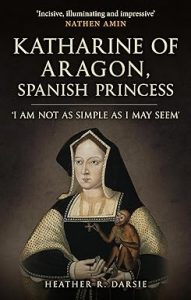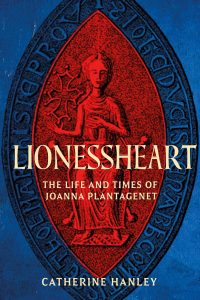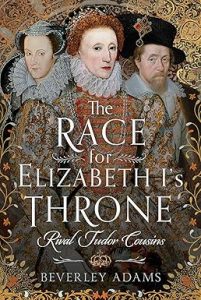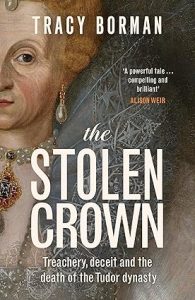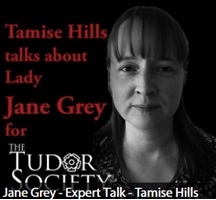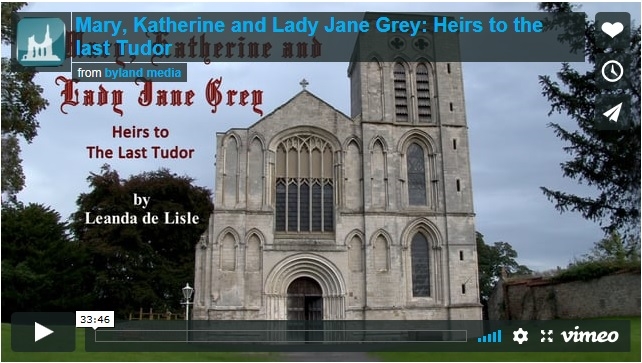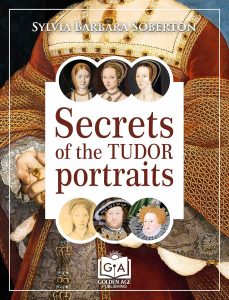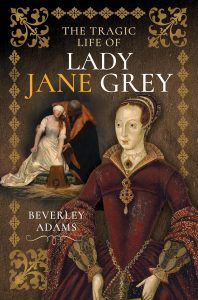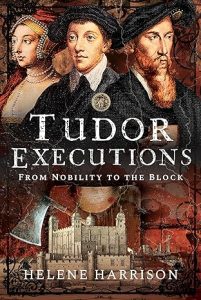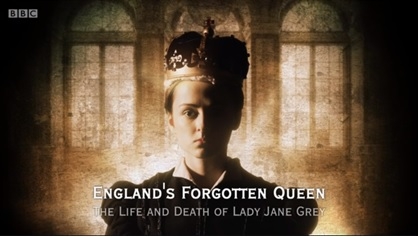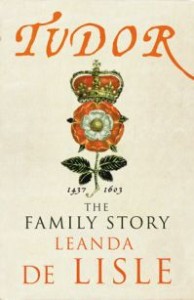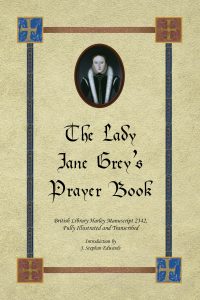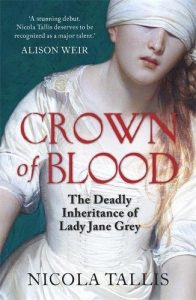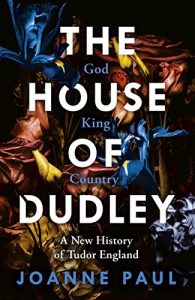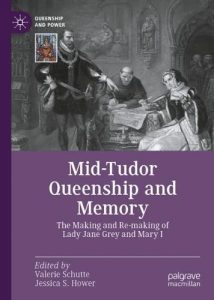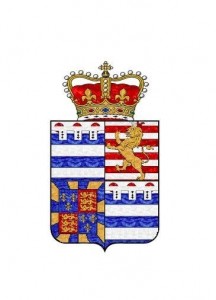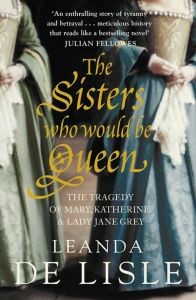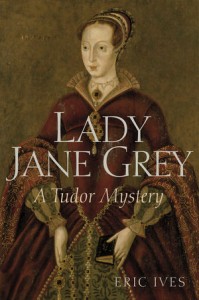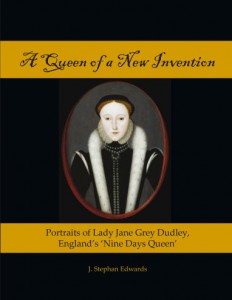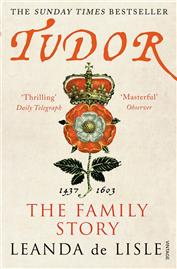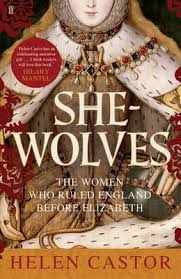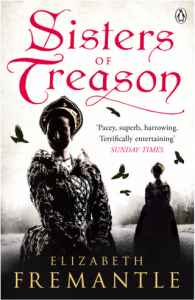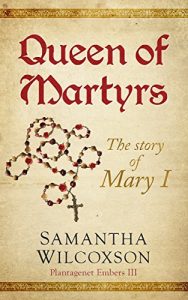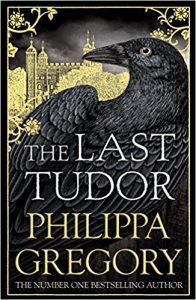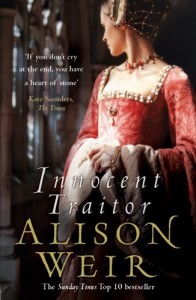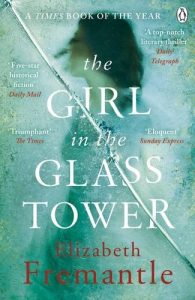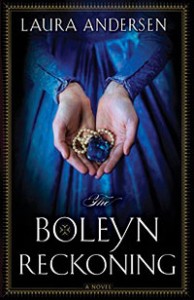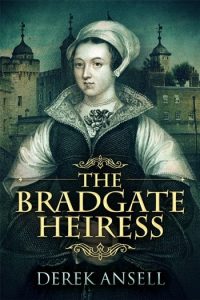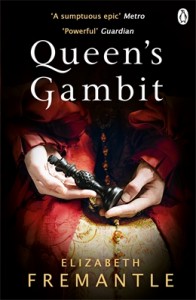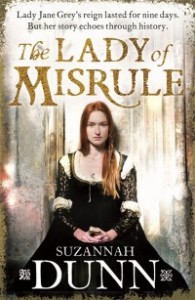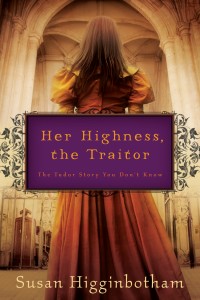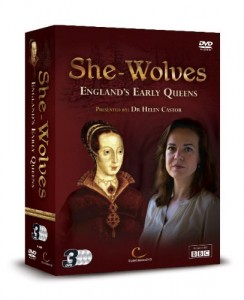Historian Leanda de Lisle has recorded a number of podcasts uncovering the Tudors and Stuarts behind the myths.
Leanda is the author of ‘White King: Charles I – Traitor, Murderer, Martyr’, ‘Tudor: The Family Story’ and ‘The Sisters Who Would Be Queen: The Tragedy of Mary, Katherine and Lady Jane Grey.’
 (c) Harper Collins
(c) Harper Collins
Queen Elizabeth’s Secret –The hidden story of Lady Katherine Grey
It is Elizabeth Tudor’s Catholic cousin, Mary Queen of Scots, who is remembered as the Queen’s principle royal rival. But until the death of Lady Katherine Grey, Elizabeth feared this English, royal, Protestant cousin far more.
This is not a truth that fit’s with the Elizabethan myths, so Katherine’s dramatic life is largely forgotten. Along with one of the great love stories of English history.
To recover the lost story of Katherine Grey, we must return to the dying months of the reign of Elizabeth’s elder half-sister, Mary I. There was an influenza epidemic and Katherine, aged 18, blonde and beautiful, was nursing a sick girl friend at the girl’s home. Her friend’s tall, slim, 19 year old brother, Ned Seymour Earl of Hertford was also there and during the course of that country house summer they fell in love.
Katherine and Ned were warned their romance was dangerous. Queen Mary was sick and their love affair posed a threat to her successor, Elizabeth. Under the will of Katherine’s great-uncle, Henry VIII, backed by statute, Katherine followed Elizabeth in line to the throne. It was possible however that if Katherine was married and had a male heir, the Protestant political elite would prefer her to the unmarried and childless Elizabeth.
Indeed, they had form in this regard. In 1553 King Henry’s son, Edward VI had cut his half-sisters, Mary and Elizabeth out of his will and bequeathed his throne to Katherine’s elder sister, Jane Grey. The Protestant elite had backed his decision, principally because Mary was a Catholic but also because the Tudor sisters were unmarried, while Jane Grey had a husband.
Mary Tudor who was supported by thousands of ordinary people had overthrown Jane only 9 days after Jane was proclaimed Queen in London. But as Elizabeth never forgot, the Greys had continued to plot against Mary. With Jane in the Tower, her father had taken part in a rebellion. When it failed, Jane was executed.
In modern accounts she died an innocent. But the real Jane is someone we would recognise today, a teenage ideologue, who understood the weapons of propaganda and who had embraced death for her cause. Jane had proclaimed herself a Protestant martyr before her death and her last letters were published only weeks later as propaganda. They included a letter written to Katherine, as her political and spiritual heir. It is not surprising that Elizabeth did not trust Katherine and believed that for her own security she would have to ensure that Katherine never had a son.
At the time of Queen Mary’s death in the November of 1558, Elizabeth was blissfully ignorant of Katherine’s romance. Nevertheless, one of her first actions was to demote Katherine from the privy chamber (whose members served the Queen in her most private rooms). Instead Katherine was placed in the presence chamber, to which all the gentry had access. It sent out a clear message that those who wanted royal favour should not be friendly with Lady Katherine Grey.
Elizabeth remained too busy however, pursuing her own passion for married, Master of the Horse, Robert Dudley to notice the affair between Katherine and Ned. The young couple later remembered the royal progress of 1559, with its summer banquets and garden walks as the time when they fell in love.
It was however, Elizabeth’s devotion to Robert Dudley that was the talk of the court. It seemed that she only had eyes for him. By the summer of 1560, many believed that Elizabeth’s affection for Dudley would lead to her overthrow and Ambassadors and Privy Councillors were discussing the arrangement of a suitable future marriage for Katherine, as her heir.
The Spanish hoped to see Katherine married to a Hapsburg. Elizabeth’s councillors talked instead of marrying Katherine to the Earl of Arran, leader of the Scottish Protestants but Katherine had her own way and married Ned in secret.
The transcripts of later interviews in the Tower, describe Katherine and Ned’s wedding night in intimate detail. The service took place in his bedroom in a house on the Thames with only his sister as witness. They toasted their wedding quickly and rushed to bed. They made love twice, with Katherine naked, save for her headdress. Then they dashed back to court so they wouldn’t be missed.
Over the following months, the couple had sex in all the Queen’s palaces as well as at Ned’s London house. Katherine became pregnant. Terrified over how Elizabeth would react, she wouldn’t accept what was happening. With Ned anxious to leave England on a trip round Europe, she ignored what her body was telling her and agreed he could go. She was eight months pregnant when she finally confessed to the Queen’s love, Robert Dudley, that she was to have a child. Katherine hoped Dudley would protect her but Elizabeth promptly threw Katherine in the Tower and Ned, recalled from his trip round Europe was also imprisoned.
The fact that Ned’s mother had royal blood and his father was Edward VI’s Uncle, Protector Somerset, who had brought Protestantism to England, made Katherine’s marriage all the more threatening to Elizabeth. On September 24th 1561, Katherine gave birth to a son in the Tower, Edward Seymour, Viscount Beauchamp, heir to Elizabeth under the will of Henry VIII, following his mother in line of succession.
Two days later, the baby was baptised in the church at the Tower. Only feet from the decapitated remains of his aunt, Lady Jane Grey. Elizabeth meanwhile now ordered a church commission to find Katherine’s marriage invalid. As the sole witness to it, Ned’s sister had since died, and the cleric had vanished, it would be a simple task; the son could then be labelled a bastard. For Elizabeth, it was vital however that they did not have a second son. Under canon law, a legal marriage only required a statement of intent to marry before witnesses, followed by intercourse.
Katherine and Ned had been interrogated by the Archbishop of Canterbury and senior councillors on their marriage and told them all that they considered themselves man and wife. Any new child would therefore be legitimate, should they ever conceive another.
The lover’s rooms were only 10 feet apart within the mansion house of the Lieutenant Sir Edward Warner. He was sufficiently sympathetic to Katherine to allow her to keep pet dogs and monkeys, even though they damaged the furniture. Warner’s deputy went further and permitted messages to be passed between the couple. But Ned also succeeded in bribing two of the Tower guards to unlock his door and those to Katherine’s chambers.
On his first visit to her rooms they had an hour together. They spent it on Katherine’s bed of silk shot damask with its striped quilt of scarlet and gold. There, they made love with joyful heart. Four days later Ned was in her bed again. But when Ned visited his wife on the third night, he found the door to Katherine’s rooms locked. The guards had got cold feet and maybe someone senior had got wind of what had occurred. In any event, just when Elizabeth had succeeded in getting Katherine’s first son declared a bastard, she discovered that the 22 year old Princess was about to give birth again.
Elizabeth promptly had Sir Edward Warner locked up in his own prison for the lapse of security that allowed Katherine and Ned to enjoy their conjugal rights. The public mood was behind the lovers with people demanding to know why should man and wife be prevented from coming together? The situation only intensified when on the morning of February 10th 1563, Katherine delivered a second son, Thomas Seymour. Two of the Tower’s wardens played godfather at the christening. Elizabeth was no angry that it was reported that she had refused a priest for the baptism. Certainly there was no time given for celebration at the christening. Ned was hauled before the Star Chamber court that same day to face his punishment.
In front of a court room packed with his fellow noblemen, Ned received ruinous fines. Five thousand pounds for impregnating Katherine with her first child and a further five thousand for the second. There was yet another five thousand for breach of prison. He was also sentenced to jail during the Queen’s pleasure.
That summer the couple were moved from the Tower and separated. Each was sent to a different country house where they remained under guard. Katherine, parted not only from her husband but also her elder child, fell into a depression. She stopped eating and wrote desperate, passionate letters to her Ned. Katherine’s recollections of their love making are a very rare example of intimacy to be written during this period.
‘I long to be merry with you, as I know you do with me. As we were when our sweet little boy was begotten in the Tower, the 25th or 29th of May. I wish you to be as happy as I was sad, when you came to my door for the third time and it was locked. Do you think I can forget what passed between us? No, I cannot. I remember it more often than you know. I have good reason to when I reflect what a husband I have in you. It is a hard fate to be deprived of so good a man, well I say good although you have been naughty. Could you have found it in your heart not to give me a second child, so hard on the heels of the first? No, while I would have liked to rest my weary bones, I don’t doubt also that I would willingly bear the pain of further childbirth such is my boundless love for my sweet bedfellow, who I once lay beside with joyful heart and shall again. Your most loving and faithful wife during life, Katherine.’
Katherine pleaded with Elizabeth for forgiveness, none came. A miniature of Katherine with the infant Lord Beauchamp, painted at around this time, by the female court artist Levina Teerlinc, remains the earliest known portrait of an English mother with her baby. A sad reminder for Katherine of all she had lost. But for others it represented the future, an icon of a Madonna, carrying the Lord’s anointed, the next King of England. English and Protestant, unlike the Scottish, Catholic Mary Stuart. Copies were made and even after 450 years several still survive. Katherine and Ned had many friends who hoped that the Queen could yet be pressured to naming Katherine and one of her sons as her heir.
Katherine never would like beside her sweet bedfellow again. The unmarried virgin Queen left her fertile cousin to rot. As the years passed, Katherine’s despair deepened. In January 1568 her warder sent a letter asking for the royal doctor, warning that Katherine was ill and worse, that she seemed to welcome death. The doctor that arrived from the court found he could do nothing for Katherine; she wanted to die. On the night of 26th January 1568, those at her bedside tried their best to raise her spirits. Telling her that, ‘with God’s help you shall live and do well many years.’ Katherine replied firmly, ‘No, no, no life in this world.’
At about six or seven the next morning, Katherine gave her warder her last messages. She begged Elizabeth ‘to be good to my children and to my Lord, for I know this, my death will be heavy news to him.’ She sent Ned the pointed diamond he had given her on their betrothal, her gold wedding band and a memento mori ring, engraved with the words ‘While I lived, yours.’
Katherine’s death at 9 o’clock that morning, Tuesday 27th January 1568, brought to a close the tragic love story of the Queen’s principal English rival. Katherine was only 28. Elizabeth put on a show of grief, as was expected at the death of a relative but it was judged an unconvincing performance. She was afraid of her, the Spanish Ambassador noted.
Katherine was to be buried in a little chapel near the house where she died in Yoxford, Suffolk. Ned was freed two years later in 1571, still hoping that their eldest son Lord Beauchamp would one day be King.
When Beauchamp was 19, he fell in love in the same house as his parents had begun their romance, but with a gentlewoman not considered grand enough to be a future Queen consort. Elizabeth, delighted gave the marriage her blessing, knowing it would destroy the boy’s chances of the crown.
In 1603, James Stewart, the son of Mary, Queen of Scots succeeded Elizabeth to the throne. Ned lived long enough to see how unpopular James became. He died aged 84, over 50 years after Katherine. To King James’s anger, efforts were still being made to prove the validity of their marriage.
Ned and Katherine’s grandson, William Seymour waited until Charles I became King before he disinterred his grandmother from her grave in Suffolk. In 1625 she was buried with her husband. They have a magnificent tomb in Salisbury Cathedral.
The inscription, in Latin describes:
Incomparable Consorts
Who, experienced in the vicissitudes of changing fortune
At length, in the concord that marked their lives,
Here rest together.’
The star crossed lovers who had been kept apart by Elizabeth for so long were reunited at last.
You can listen to the podcasts at: Leanda de Lisle Podcasts
Leanda’s website: Leanda de Lisle
Twitter: @Leanda de Lisle
Facebook: Leanda de Lisle




